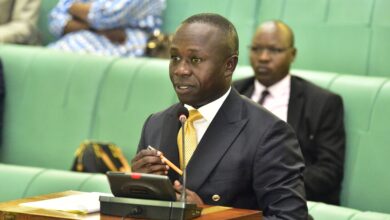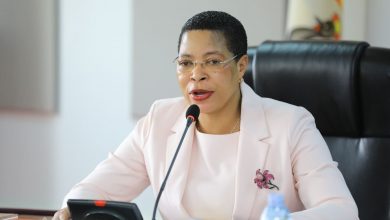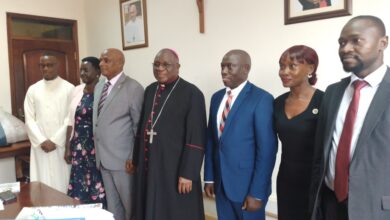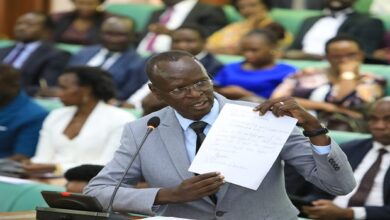Oil In Uganda: African CSOs demand that Ramsar Secretariat takes action
They are demanding that the Ramsar Secretariat adds Ramsar Wetlands that have been affected by TotalEnergies and China National Offshore Oil Corporation’s (CNOOC) projects in Uganda and Tanzania to the Montreux Record.

Sixty one African Civil Society Organizations (CSOs) have written to the Secretary General of the secretariat of the Ramsar Wetlands of international importance.
They are demanding that the Ramsar Secretariat add Ramsar Wetlands that have been affected by TotalEnergies and China National Offshore Oil Corporation’s (CNOOC) projects in Uganda and Tanzania to the Montreux Record.
The Montreux Record is a “record of Ramsar Sites where changes in ecological character have occurred, are occurring, or are likely to occur due to technological developments, pollution or other human interference”.
The CSOs are also demanding that the Ramsar Secretariat adds Virunga National Park, which contains a Ramsar site, to the Montreux Record.
They argue that oil exploitation or exploration activities by TotalEnergies, CNOOC as well as the Ugandan, Tanzanian and Congolese governments, have put at least three Ramsar sites at risk of degradation.
They want these Ramsar wetlands to be better monitored by third parties to aid their conservation so that they continue to play their biodiversity conservation and climate stabilisation roles.
The two oil companies and governments are developing the Tilenga and East African Crude Oil Pipeline (EACOP) projects. Part of the Tilenga upstream project in Uganda is within the boundaries of the Murchison Falls-Albert Delta Ramsar wetland in Murchison Falls National Park (MFNP).
The EACOP is a planned 1,443-kilometer pipeline from the Tilenga and Kingfisher oil fields in Uganda to the port of Tanga in Tanzania. It is set to affect over 158 wetland sections in Uganda.
Some of these, which are connected to Ramsar sites in Uganda, include Kibale/Bukoora, Kisoma, Kasemugiri, Jemakunya and Katonga.
The Ramsar sites connected to the aforementioned wetlands include the Sango Bay-Musambwa Island-Kagera (SAMUKA) Ramsar Wetland System, which has an economic value of USD 117 million per year (Sango Bay only) and Nabajjuzi Ramsar Wetland. The EACOP-affected wetlands that may be connected to Ramsar sites in Tanzania remain unknown.
Dickens Kamugisha of Africa Institute for Energy Governance (AFIEGO) in Uganda said they are worried about the high pollution risk that the Tilenga and EACOP projects pose to Ramsar wetlands in Uganda, Tanzania and the DRC. The Victoria Nile Crossing, which is within the boundaries of the Murchison Falls-Albert Delta Ramsar site, is particularly worrying, he said in a statement the 61 organization released on Monday.
“While TotalEnergies has promised to ensure biodiversity conservation amidst its oil exploitation activities covering Ramsar wetlands and other biodiverse areas, it is very difficult to believe them.
In Uganda and Tanzania, they have been unable to manage impacts arising from their compulsory land acquisition processes for the Tilenga and EACOP projects.
They have also been unable to manage the flooding as well as dust, noise and light pollution impacts seen because of the Tilenga project in Buliisa district in Uganda,” he said.
Patience Katusiime of the Environment Governance Institute in Uganda, says the mapping analysis shows that TotalEnergies is already constructing seven of the ten wellpads that are to be located within MFNP. Two of the wellpads are too close to the Murchison Falls-Albert Delta Ramsar site, she said.
She added” “TotalEnergies often says that they are using a small part of the park but these new satellite images show that a combination of oil roads, bridges, oil feeder pipelines and wellpads could destroy the park.”
Richard Sekondo of Organisation for Community Engagement (OCE) in Tanzania reveals that along the Tanzanian shore, two important Ecologically or Biologically Significant Marine Areas (EBSAs) – the Pemba-Shimoni-Kisite site and the Tanga Coelacanth site – are at high risk from oil leaving the port at Tanga.
He said: “These EBSAs host several Marine Protected Areas, as well as Mangrove Forest Reserves. The Pemba-Shimoni-Kisite site is known for its coral reefs, as well as the endemic coconut crab (Birgus latro), the largest land-living arthropod. These need to be protected.






